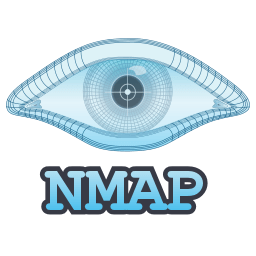Category: Tutorials
The Liquid Web knowledgebase provides information on thousands of topics surrounding every aspect of hosting, Linux, Windows, and countless other article types that help boost your Liquid Web experience!
How to Install Wildfly on CentOS 8
What is Wildfly?
WildFly is a Java runtime application server and software management platform implemented in Java. It is primarily used to provision Java applications and services on a Java-based platform. It is currently developed by Red Hat as open-source software (apart from the community forums) and was better-known as JBoss AS previously. While the WildFly software remains open-source, paid support can be purchased from RedHat if needed. RedHat continues to implement a separate version of this software under the JBoss EAP name.
How To Add a User and Grant Root Privileges on Ubuntu 18.04
Adding a user and granting that user root privileges is one of the many tasks of a system admin. Once a user has been added and granted root privileges they’ll be able to login to your Ubuntu VPS and perform vital functions for the upkeep of the system. Afterward, they’ll be able to use sudo before commands to perform elevated tasks. In this quick tutorial, we’ll show you how to add a new user and grant root permissions.
How to Add a User and Grant Root Privileges on Ubuntu 16.04
Ubuntu 16.04 LTS provides you the ability to add a user for anyone who plans on accessing your server. Creating a user is a basic setup but an important and critical one for your server security. In this tutorial, we will create a user and grant administrative access, known as root, to your trusted user.
How to Install Java on Ubuntu, Windows, and MacOS
What is Java?
Java is considered one of the most popular programming languages. Java is a typed object-oriented programming language developed by Sun Microsystems (and subsequently acquired by Oracle). Development is mainly performed by a community organized through the Java Community Process. The language and the main technologies that implements it are distributed under the GPL but the trademark rights are owned by Oracle Corporation. Code written in Java (using the JVM - Java Virtual Machine) is transformed into bytecode and due to this, programs can run on any system where the JVM is installed. Therefore, Java is often called a cross-platform language. Most often, Java is used to develop backend programs and android applications.
Creating Database Tables with phpMyAdmin
Creating a table and remembering what all details need to go in it can be tricky if you are manually running commands to get it set up. phpMyAdmin can help with setting up the structure for the tables and makes the whole process quick and easy. This guide assumes that you have already logged in to PhpMyAdmin. Now let’s explore how to run SQL queries on a database.
How to Install and Use ApacheTop
What is ApacheTop?
ApacheTop is an uncomplicated command line (CLI) utility that is used to monitor http traffic in real-time. It achieves this task by analyzing the incoming apache logs and based on that data presents understandable output to our screen. It can be configured to output X number of hits, or output X number of hits within X seconds.
Using Nmap: Pro Tips and Tricks
Introduction

In this article, we will review the Nmap software program and multiple commands. Nmap is an open-source mainstream tool used by network administrators to scan ports and map networks. Nmap commands are primarily used to identify which ports certain software is running on our system. It is also used to discover available hosts and what services they are offering and detecting potential security risks. Using Nmap, you can check a single host or a complete network. In this tutorial, we will cover several basic as well as advanced Nmap commands in the “Pro Tips and Tricks” section of the article.
What Is Umask and How to Use it Effectively
What is Umask?
Umask, or the user file-creation mode, is a Linux command that is used to assign the default file permission sets for newly created folders and files. The term mask references the grouping of the permission bits, each of which defines how its corresponding permission is set for newly created files. The bits in the mask may be changed by invoking the umask command.
Creating a Virtual Environment for Python on Ubuntu 16.04
What Is Virtualenv?
Virtualenv is a tool that creates an isolated environment separate from other projects. In this instance, we will be installing different Python versions, including their dependencies. Creating a virtual environment allows us to work on a Python project without affecting other projects that also use Python. It will utilize Python's core files on the global environment to run, thus saving you disk space while providing the freedom to use different Python versions for separate apps or projects.
How to Access Your Windows Server with Remote Desktop
In this article, we explain how to use Remote Desktop to access your Windows server's desktop from anywhere in the world. On a normal Windows computer, you have a keyboard, monitor, and mouse that allow you to interact with the machine. For Windows VPS servers hosted on the Internet, things are a bit different because your server could physically be thousands of miles away. To access the desktop of an Internet-hosted server, Microsoft has created a feature known as Remote Desktop.
Our Sales and Support teams are available 24 hours by phone or e-mail to assist.

